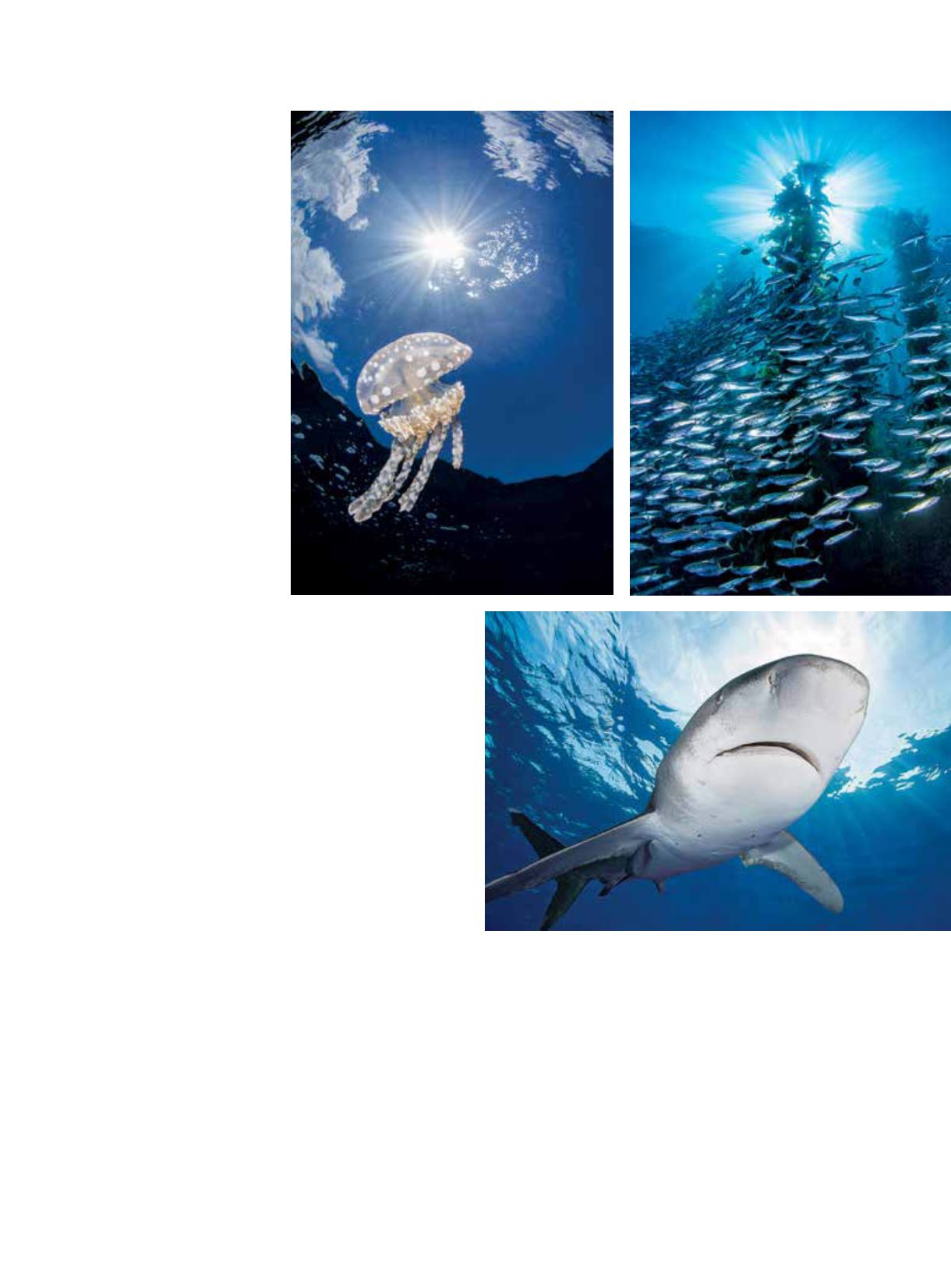
104
|
FALL 2014
SETTING YOURSELF UP
FOR SUNRAY SUCCESS
Whether shooting sunrays or
sunballs, you’ll probably need
to limit the amount of light
that reaches your sensor. The
most powerful tool in your
camera to prevent the sunball
from looking more like a
sunblotch is shutter speed. If
you’re using strobes, set your
shutter to the fastest speed that
permits strobe synchronization
(1/160 sec to 1/320 sec for
most cameras). If your image
still looks overexposed and
your ISO is as low as possible
(100 for most cameras), then
try decreasing the size of your
aperture to reduce the size of
the sunball. Note that ISO and
aperture adjustment will also
affect your foreground — a
complicated issue addressed later in more detail.
A common tactic to compensate for a bright sun is
extreme underexposure. While this approach will help
dampen the brightness of your sunball and can result
in striking, high-contrast images, it sometimes does so
at the expense of capturing the true color of the water,
rendering rich blue or green hues nearly black at the
periphery of the frame.
Unfortunately, there are some occasions when
shooting toward the sun simply will not produce an
acceptable image. In very clear, shallow water at mid-
day, for example, the chances are that your sunball will
look like a whitish blob rimmed in thick cyan and aqua
halos — no matter what camera settings you’ve chosen. A
popular troubleshooting technique is to use reef or wreck
structures, marine life or silhouetted divers to block the
majority of the sun. Another option is to adjust your
composition to include only the edge of the sun or its
rays. One final option can be applied postdive: If you have
taken a shot that inadvertently or unavoidably contains
an overexposed sunball, a bit of creative cropping may
allow you to rescue an otherwise unsalvageable image.
If you are over deep, clear water, there is an additional
way to incorporate the sun into your image in very
bright conditions: Shoot at a downward angle with
the sun behind you. The rays will sometimes appear
to converge to a point below you, creating an optical
perspective effect that can add creative components to
images, particularly pelagic marine life portraits. Since
you’re not shooting toward the sun, this technique is
more forgiving in terms of settings, although fast shutter
speeds may still be necessary to freeze the light beams
and capture sharp images of your primary subjects.
IMAGING
/ /
P H O T O T E C H N I Q U E S
Clockwise from upper left: Particulate in the water column and an
afternoon sun created a sunburst with sharply defined sunrays above
this jellyfish at 10 feet in the Solomon Islands. With the brightest
part of the mid-day sun carefully hidden, particulate in the water
helped to create sharply defined sunrays with these schooling
mackerel in the Channel Islands. Not only is this oceanic whitetip
shark a captivating subject, but it also covers the strong, mid-day
sun, preventing an overpowering sunball.


